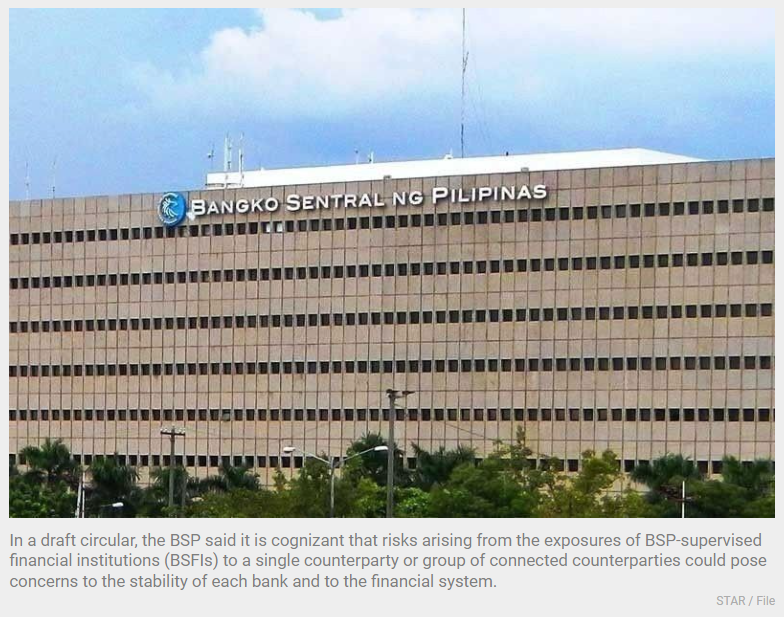Cambodia: BSP to tighten guidelines on large bank exposures
MANILA, Philippines — The Bangko Sentral ng Pilipinas (BSP) is finalizing a large exposures frameworks for banks to ensure the stability of the banking sector as well as the country’s financial system.
In a draft circular, the BSP said it is cognizant that risks arising from the exposures of BSP-supervised financial institutions (BSFIs) to a single counterparty or group of connected counterparties could pose concerns to the stability of each bank and to the financial system.
“In this regard, BSFIs are expected to properly and accurately identify, measure, monitor and control large exposures across books and operations in order to protect BSFI’s solvency from maximum losses resulting in sudden counterparty failure,” the BSP said.
Under the proposed guidelines, large exposures refer to exposures to counterparty or a group of connected counterparties equal to or greater than 10 percent instead of five percent of the bank’s common equity Tier 1 capital instead of qualifying capital.
The BSP said there is an economic interdependence if 50 percent or more of a counterparty’s annual gross receipts or gross expenditures is derived from transactions with the other counterparty, or if one counterparty has fully or partly guaranteed the exposure of the counterparty or is liable by other means and the exposure is so significant that the guarantor is likely to default if a claim occurs.
Other factors are: if a significant part of a counterparty’s business is transacted with the other counterparty; if the expected source of fund to repay the loans of both counterparties is the same and neither counterparty has another independent source of income from which loans may be serviced; and if it is likely that the financial difficulties of one counterparty would cause difficulties for the other counterparties in terms of full and timely repayment of liabilities.
Another factor, the BSP said, is if the insolvency or default of one counterparty is likely to be associated with the insolvency or default of other counterparties.
The BSP said banks and quasi-banks should identify connected counterparties on the basis of economic interdependence in all cases where the sum of all exposures to a single counterparty exceeds five percent of Tier 1 capital.
According to the BSP, the sum of all the exposure values to a single counterparty or to a group of connected counterparties should at no time exceed 25 percent of Tier 1 capital on a solo and consolidated basis.
The proposed framework would also cover the aggregation and measurement of exposures, the eligible credit risk mitigation as well as exclusions from the large exposures limit.
The regulator said banks should immediately inform the BSP of any breach of the large exposures limit within three banking days upon discovery.
This report to the BSP should include an explanation of the reason for such breach, and assessment of the effect in terms of risks posed to the bank.
The central bank directed BSFIs to report to the BSP their large exposures on both solo and consolidated basis every end-June and end-December of each year.
The BSP warned that supervisory tolls and enforcement actions would be deployed to promote adherence with the timely corrective actions, to ensure appropriate and consistent adoption of the large exposures framework.
The maiden report on large exposures should be submitted on or before end-March next year, while all BSFIs are required to observe the large exposures framework starting Jan. 1, 2024.
Source: https://www.philstar.com/business/2022/04/18/2174830/bsp-tighten-guidelines-large-bank-exposures


 English
English




